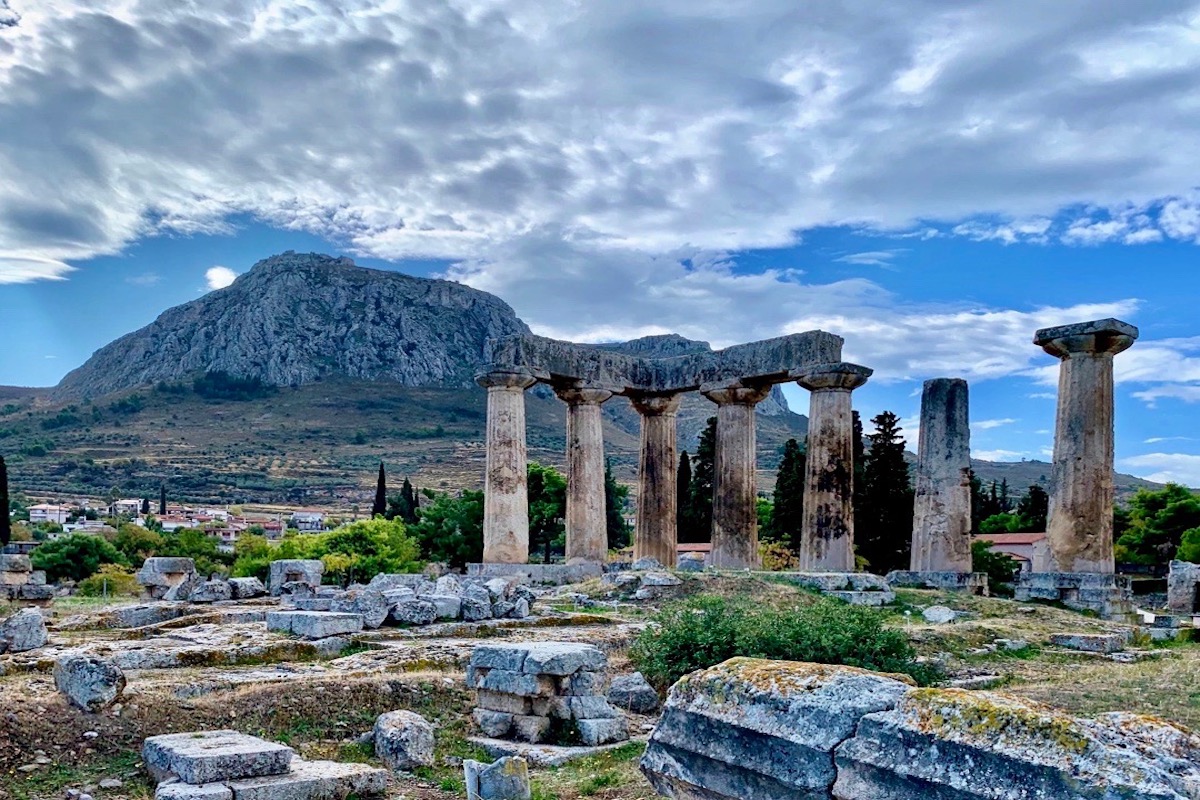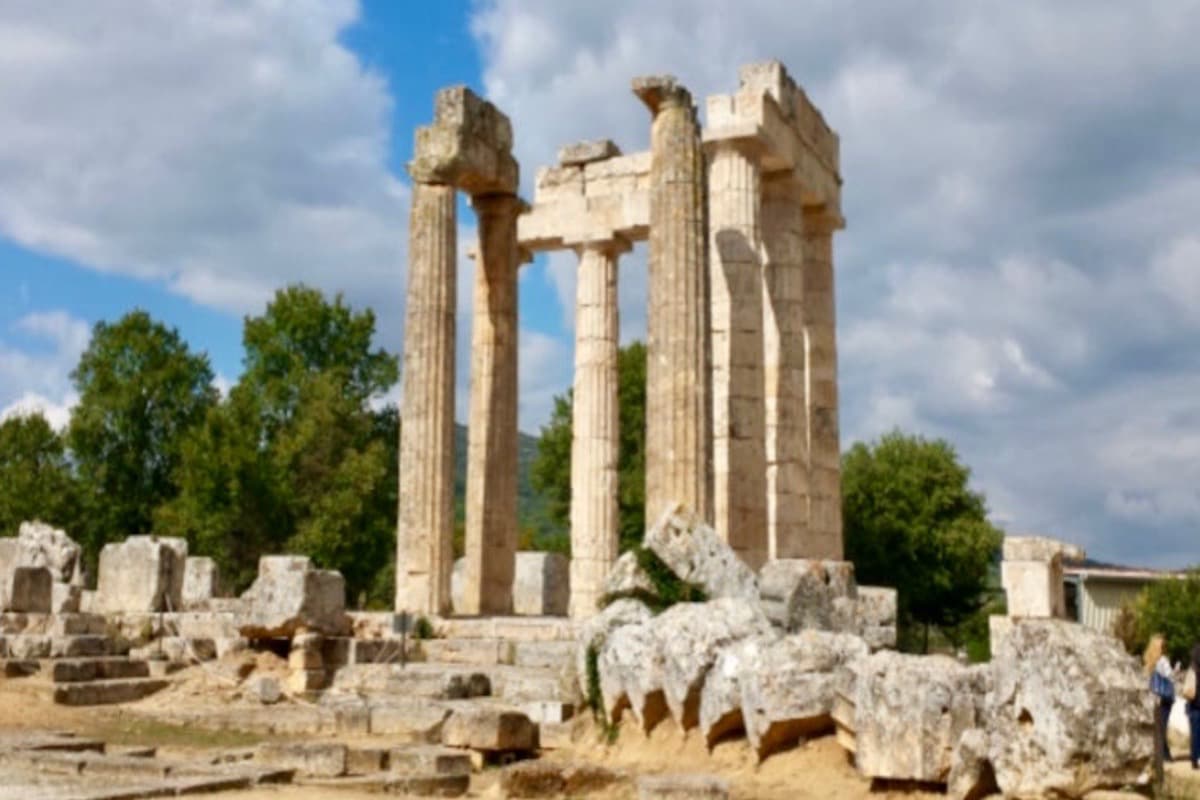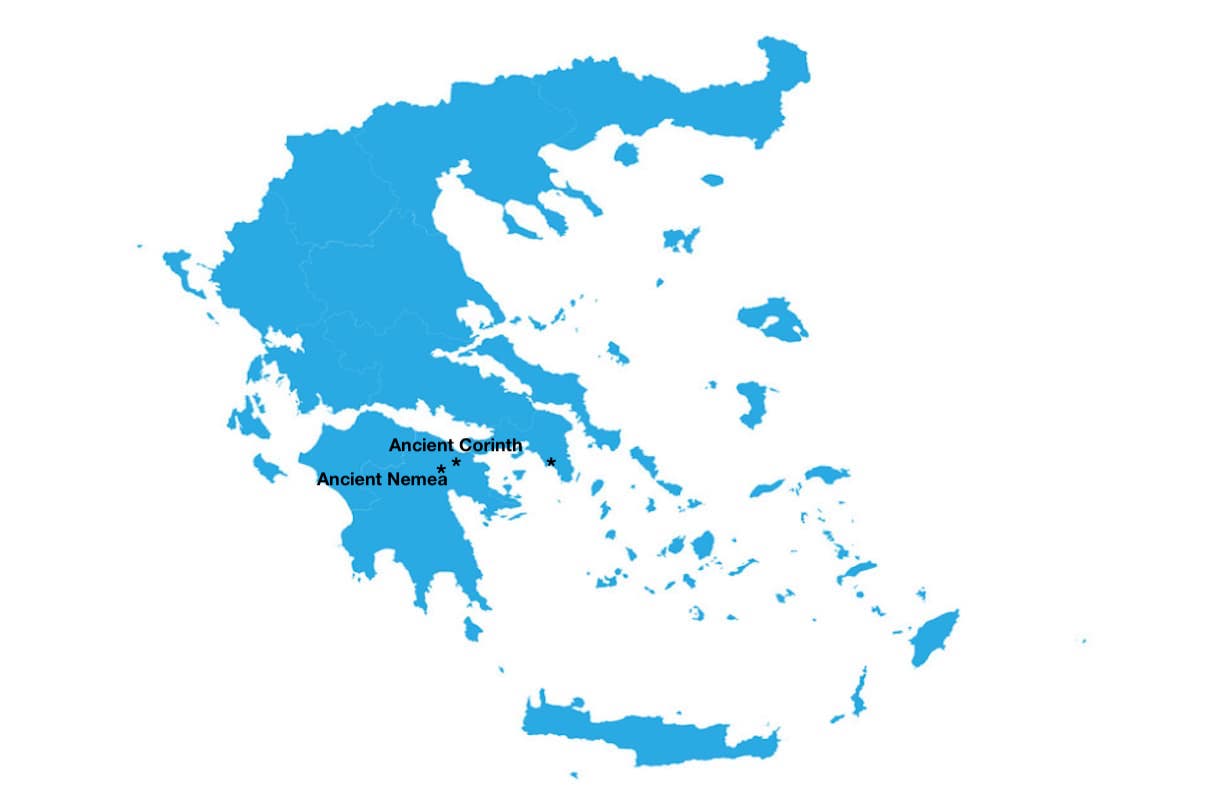ANCIENT CORINTH AND NEMEA
Athens to Ancient Corinth and Nemea Tours
Greece Tours, Athens to Ancient Corinth and Nemea, Private Tours, and wine-tasting in daily guided excursions.
Ancient Corinth and Nemea
Ancient Corinth is a historical gem just over an hour's drive from Athens. Those interested in exploring the ruins of Classical Greece and the early Christian period should not miss this destination. Private Tours Greece offers various tour packages and excursions, including Ancient Corinth. The city of Ancient Corinth was once a powerful center of trade and culture and is known for its rich history spanning over 3,000 years. This archaeological site's importance to Greece's history and culture is undeniable, which makes it a must-visit destination for history enthusiasts.
In addition to exploring the ruins of Ancient Corinth, visitors can enjoy the Peloponnese region, which boasts stunning natural beauty and a wealth of cultural attractions. In Private Tours Greece, our suggested tours to the Peloponnese region include visiting Ancient Corinth, which is a convenient addition to your itinerary. Whether you're interested in exploring the ancient history of Greece or want to enjoy the beauty and culture of this fascinating region, a visit to Ancient Corinth is sure to be a memorable experience.
Nemea is a charming and picturesque small town in the northeastern part of the Peloponnese peninsula, and Private Tours Greece includes daily excursions and other tour packages from Athens. The town is renowned for its rich cultural and historical significance. In ancient times, Nemea was home to the Nemean Games. These games were held every two years and were dedicated to the king of gods, Zeus. The games included athletic and musical competitions, attracting participants and spectators from around the ancient world.
Today, visitors to Ancient Nemea can still witness the remnants of the ancient stadium where the Nemean Games took place and the archaeological site. The ruins of the stadium, which date back to the 4th century B.C., are located just outside the town, and visitors can explore the site and learn more about the history of the games.
Besides its rich history and culture, Nemea is famous for its wine production and the many small wineries, to which Private Tours Greece organizes wine-tasting tours in combination with a visit to the region's archaeological sites. The town is home to the Agiorgitiko grape, which is grown in the surrounding hills and is used to produce some of the best red wines in Greece. The wine is known for its deep color, fruity aroma, and full-bodied taste, making it a perfect accompaniment to the local cuisine. Visitors can indulge in wine-tasting sessions and learn about the wine-making process while enjoying the scenic beauty of the Nemean countryside.
In summary, Nemea is a must-visit destination for history and wine enthusiasts. The town of Nemea offers a unique blend of ancient history, stunning natural beauty, and excellent wine, making it a perfect getaway for travelers seeking an authentic Greek experience. Ancient Corinth and Nemea are destinations that can't be missed.
Ancient Corinth
From the very early years, the strategic location and fertile land at the crossing of land routes from the Peninsula of Aimos and Mainland Greece towards the Peloponnese offered the area an enormous potential for communication, growth, and prosperity. The city, known from the Mycenaean period, was favored with intense growth in trade activities, mainly towards the Western Mediterranean. In the 8th century, B.C. Corinthian colonies were founded in many places, like the island of Corfu and Syracuse in Sicily, and they played a vital role in contributing to the history of the ancient Mediterranean world. The city's economy and prosperity peaked in the 7th and 6th centuries B.C. under the rule of the tyrant Cypselos and his son Periandros. Corinth shows its strength by leaving its mark with impressive buildings like the Temple of Apollo, built in 560 BC, and by promoting the Isthmian Games (held at the Corinthian sanctuary of Poseidon and Amphitrite at Isthmus) to the level of the Panhellenic Games in 584 BC, increasing the city's fame and influence. At the Isthmus of Corinth, the Canal connecting the Saronic with the Corinthian Gulf is an impressive engineering work that took place at the end of the 19th century. The Canal is 6.2 km long, 80 m high, and 25 m wide. Periandros first attempted to open a canal there in the 6th century B.C. Later, Roman Emperor Nero started the excavations again—an expensive project abandoned soon after his death. From the 6th century B.C., a paved road called Diolkos was built following the landscape between the two gulfs from side to side so they could pull the ships over the land, avoiding the dangerous and long way around the Peloponnese. The Archaeological Sites of Ancient Corinth are mainly the Agora and the Archaeological Museum. The Agora is also the Altar of the Apostle Paul, where he stood to address the Jews and residents of Ancient Corinth to convert them to Christianity. He stayed in Corinth for 18 months before moving back to the Middle East from the East Port of Corinth in the Saronic Gulf at Kechries. The Archaeological Society of Athens conducted limited excavations in 1892 and 1906. The systematic excavations of the area started with the American School of Classical Studies in 1896 and continue today.

Ancient Corinth
Ancient Corinth was inhabited for the first time in the Neolithic period (6500 - 3250 B.C.)
Nemea
Ancient Nemea and the Archaeological site include the Temple of Zeus and the Archaeological Museum. Nearby is also Nemea's Stadium, where Nemea's famous athletic events dedicated to Zeus occurred. A wine tour and a visit to one of the many wineries of the Nemea Valey and the excellent wine they produce is a must for the fans good wine. Ancient Nemea and the Archaeological site include the Temple of Zeus and the Archaeological Museum. Nearby is also Nemea's Stadium, where Nemea's famous athletic events dedicated to Zeus took place. If you're a history enthusiast or love exploring ancient sites, visiting the Temple of Zeus in Nemea is a must-do activity. The temple was built in the 6th century B.C. and has a rich history that goes back to prehistoric times. It's a place to learn and experience ancient Greek culture and architecture. The Nemea stadium, built in the 4th century B.C. and able to accommodate 40,000 spectators, is also worth visiting. The track has a total length of 178 meters, and a rectangular building on the western side probably served as a changing room. The spectators were seated in leveled terraces cut in the soft rock, while two or three rows of seats were constructed between the starting line and the stoas. Although the games were transferred to Argos in 270 B.C., the temple and stadium still hold historical significance and primarily represent ancient Greek architecture and culture. The excavations by the French and American Schools of Archaeology and the University of Berkeley in California have added to the site's richness. So, if you're looking for an unforgettable experience combining history, culture, and adventure, the Temple of Zeus in Nemea is a perfect destination. Take advantage of the opportunity to witness the glory of ancient Greece.

Ancient Nemea
The Temple of Zeus in Nemea was constructed at the beginning of the 6th century B.C., with the establishment of the Panhellenic Nemean Games.





